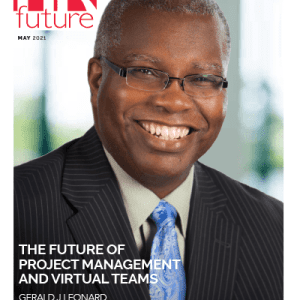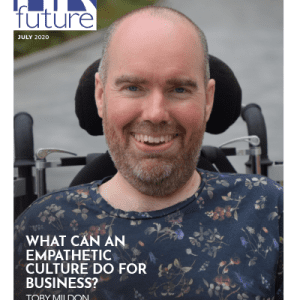Human capital is an important asset of a business that plays a pivotal role in its success. But acquiring and retaining employees has become increasingly challenging, even for the largest organizations. Inarguably, competition for talent is stiff as more businesses vie to attract the best in their industries. To make matters worse, the number of employees quitting their jobs has not slowed down much, either, since the pandemic.
According to a study by Microsoft and LinkedIn, a whopping 85% of American workers plan to switch companies in 2024. Opportunities to work remotely, higher salaries, career advancement, and better perks seem to weigh high on their agenda. However, offering these alone will not help you secure the right candidates.
This is where an effective talent acquisition strategy could help. Unlike recruiting employees, where your focus is on filling immediate openings, talent acquisition takes a more proactive, long-term approach. It is about nurturing a strong talent pipeline that can cater to your organization’s current and future requirements.
If you want to spruce up your talent acquisition strategy, here’s what you should do.
Align With Your Company’s Business Strategy
An effective talent acquisition program is never designed in isolation to simply cater to regular hiring needs as and when they arise. It should take into account long-term business strategies and goals to deliver results.
For this, you must work with internal stakeholders to understand the organization’s future plans and projects, such as new product line introductions and outlet expansions. This allows you to prepare ahead on sourcing the required skills, experience, and competencies and build a pipeline of candidates best suited for future business requirements.
In other words, you must act as an HR partner who supports business growth instead of merely taking on a transactional recruiting role.
Build Your Employer Brand
Brand building is not just for marketing products and services. It can help your company position itself in a more favorable light in the eyes of potential employees.
A strong employer brand allows firms to stand out from the competition. So, it must convey what the business represents and what it offers to those it employs.
The employer value proposition (EVP), corporate values, and culture should be critical elements of it. Pay attention to visual branding as well as brand voice and messaging, too.
Your company website, social media channels, corporate videos, and branding material can all be invaluable mediums to communicate your employer brand.
Review and Update Processes
What systems and processes do you currently have in place for talent acquisition? Review them periodically in detail and identify gaps vital for streamlining and improving their efficacy.
Policies and standard operating practices (SOPs) are also essential for creating consistency and objectivity in how your teams go about sourcing, engaging, acquiring, and onboarding talent.
For example, they could guide HR professionals when interviewing potential candidates and communicating the interview outcomes to enhance the overall candidate experience.
Assigning responsibilities, setting KPIs, and determining the necessary metrics to track and measure performance are other essential areas to focus on.
Integrate Technology
Today, there are various advanced tools available to boost the productivity of your talent acquisition process.
They can even substantially minimize errors and eliminate repetitive and non-value-adding tasks, freeing up your team for activities that matter.
Application tracking systems (ATSs) are an excellent example. They let you manage the entire talent acquisition process—from posting jobs and processing applications to scheduling interviews and sending offers to selected candidates—on a single platform.
There are also candidate relationship management systems (CRMs) and analytics tools to build a talent pipeline, nurture relationships, run recruitment campaigns, automate workflows, provide data insights, and do much more.
Create Competitive Benefits Programs
Employee perks are no longer just about free snacks and complimentary dry cleaning. For many people, the ability to lead a balanced lifestyle has become a top priority when selecting a company to work for. This trend is even more notable among younger generations who seek to separate their work and personal lives.
So, if you want to attract the best candidates, focus on their mental and physical well-being. Consider how you could help them achieve work-life balance in an inclusive environment.
This might mean integrating flexible hours, work-from-home arrangements, extended parental leave, and similar perks into your benefits programs. Of course, traditional options, such as competitive pay, personal development opportunities, retirement plans, and health insurance, will matter, too.
Be Creative With Your Outreach Efforts
To expand the talent pool available to hire from, you must look outside the traditional channels.
For example, there could be many untapped yet highly skilled candidates among veterans, stay-at-home moms, part-timers, retirees, and similar groups that your competitors have not even thought of. There is also tremendous talent in overseas markets that an increasing number of employers are now exploring.
These are all invaluable opportunities for you to fill your talent funnel with those with diverse experience and exposure.
To find them, you need a good mix of creative techniques, like networking on LinkedIn, partnering with professional organizations, and shifting your focus to industries outside yours.
To Sum Up
Your human capital is an integral part of your organization’s ability to compete, innovate, and succeed in a crowded market.
This is why you must adopt a strategic approach to talent acquisition instead of just hiring employees in a more reactive manner.
The former takes on a long-term and proactive view of meeting an enterprise’s current and future business needs. It is a deliberate and complex process that prioritizes building a diverse and competent talent pool and nurturing relationships to help attract and retain the best in the market.
However, to make your talent acquisition approach effective, it should be aligned with your organization’s business strategy. Building a strong employer brand, reviewing and updating your processes, integrating technology, and creating benefits plans that are competitive is also pivotal.
In addition, be creative when designing your outreach programs so you could tap into talent segments most businesses overlook. This will allow you to broaden the talent pool available and source highly skilled candidates from diverse backgrounds and circumstances.
Guest writer.














